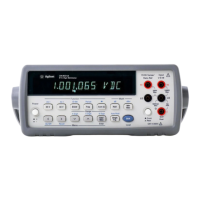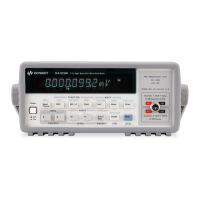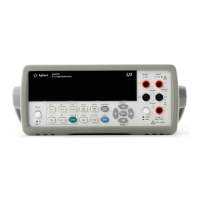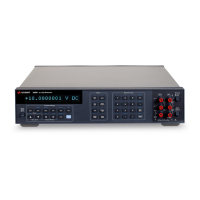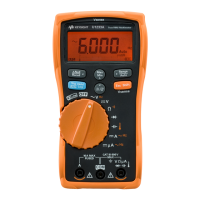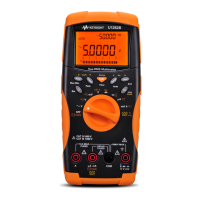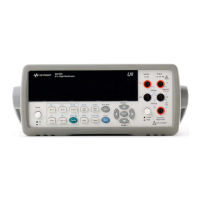Performance Tests and Calibration 4
34405A User’s and Service Guide 71
Test Considerations
Errors may be induced by AC signals present on the input
leads during a self- test. Long test leads can also act as an
antenna causing pick- up of AC signals.
For optimum performance, all procedures should comply
with the following recommendations:
• Assure that the calibration ambient temperature is stable
and between 18 °C and 28 °C. Ideally the calibration
should be performed at 23 °C ±1 °C.
• Assure ambient relative humidity is less than 80%.
• Allow a 1- hour warm- up period with a Shorting Plug
connected to the HI and LO input terminals.
• Use shielded twisted pair Teflon- insulated cables to
reduce settling and noise errors. Keep the input cables as
short as possible.
• Connect the input cable shields to earth ground. Except
where noted in the procedures, connect the calibrator LO
source to earth ground at the calibrator. It is important
that the LO to earth ground connection be made at only
one place in the circuit to avoid ground loops.
Because the instrument is capable of making very accurate
measurements, you must take special care to ensure that the
calibration standards and test procedures used do not
introduce additional errors. Ideally, the standards used to
verify and adjust the instrument should be an order of
magnitude more accurate than each instrument range
full- scale error specification.
For the DC voltage, DC current, and resistance gain
verification measurements, you should ensure the calibrator's
"0" output is correct. You will need to set the offset for each
range of the measuring function being verified.
34405A users guide.book Page 71 Saturday, September 2, 2006 3:38 PM
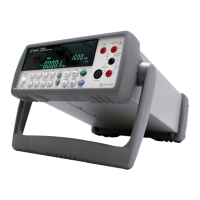
